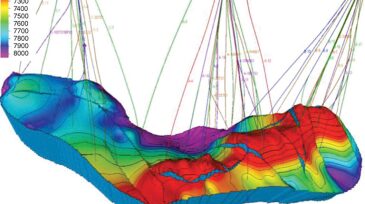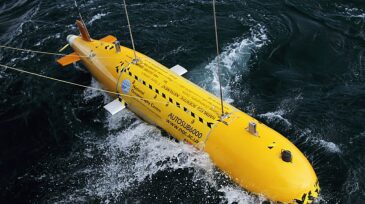Environment
The Norwegian Ministry of Energy has approved the Phase 2 expansion, which is expected to increase carbon dioxide storage capacity from 1.5 million tonnes to 5 million tonnes.
DNV’s carbon capture and storage outlook forecasts a massive shortfall in the projects necessary to help the world reach net-zero emissions by 2050.
Buoy-based camera footage, analyzed by artificial intelligence, can help reduce the risk of birds colliding with offshore wind farm turbines.
-
This paper discusses studies conducted on two California offshore fields that may be abandoned in the near future. These studies examined the feasibility of repurposing these fields for offshore gas storage by using their reservoir voidage and existing pipeline facilities.
-
The oil and gas major has set aside $100 million to fund projects that will deliver new greenhouse gas emissions reductions in its upstream oil and gas operations.
-
A recent study of oil and gas methane emissions on the Navajo Nation reveals companies operating on tribal lands pollute 65% more than the national average, wasting millions in tribal resources every year and underscoring the opportunity for tribal leaders to reduce emissions.
-
Scientists at the National Oceanographic Centre have released a review of how marine robotic capabilities can support the environmental monitoring needed for decommissioning oil and gas installations.
-
The organizations will receive more than $4.1 million for research projects aiming to improve protocols to minimize the environmental effect of oil spills in water.
-
The Trump administration on 15 March amended Obama-era land-use rules put in place to protect a threatened bird in 11 Western states and its shrinking sagebrush habitat, siding with oil and gas interests that opposed the measures as too restrictive.
-
Royal Dutch Shell said on 14 March that it planned to reduce carbon emissions from its oil and gas operations and product sales by 2–3% during the 2016–2021 period, the first time the company has issued carbon footprint targets.
-
Royal Dutch Shell urged US President Donald Trump’s administration to tighten restrictions on greenhouse gas emissions from oil and gas production, instead of weakening them as planned.
-
Researchers at two California universities are studying the fiery flares that pock-mark drilling sites in the Eagle Ford Shale of south Texas.
-
Among the most consequential provisions is the permanent reauthorization of the Land and Water Conservation Fund, a federal program established in the 1960s that uses fees and royalties paid by oil and gas companies drilling in federal waters to pay for onshore conservation programs.













